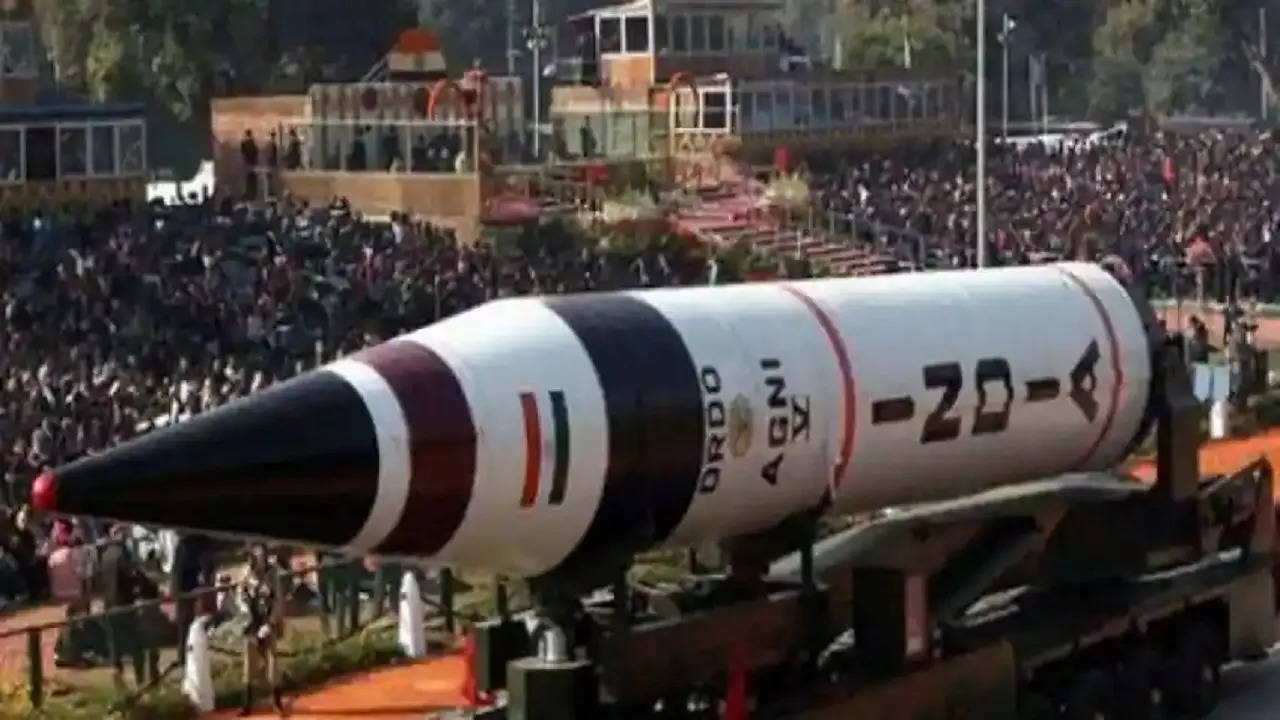China nervous as India goes swanky with extended range Agni-V bringing whole Dragon within reach
How much Agni-V rattles China despite India's "No First Use" policy, was evident when China expressed alarm about India launching an Agni-V intercontinental ballistic missile last year, citing UNSC 1172 in support of their position. The resolution was released following India's nuclear tests in 1998, which is why Agni-V is seen as a tremendous strategic flex for India.

Agni-V on display during Republic Day parade.
Photo : ANI
New Delhi: Since the nuclear-capable Agni V ballistic missile underwent successful tests earlier this week, India has gained the potential to attack targets more than 7,000 kilometres away.
According to sources in the defence industry quoted by ANI, the Defence Research and Development Organization (DRDO) was able to lower the weight of the Agni V missile by substituting composite materials for steel.
Even the farthest northern region of China, including the capital Beijing, is within the striking envelope of the Agni V, which is regarded as India's most potent missile.
The most recent trials occur barely days after a new flare-up between Indian and Chinese troops along the Line of Actual Control in the Tawang area of Arunachal Pradesh (LAC). India will have a range of alternatives during times of conflict thanks to the missile's enhanced range, which is a part of the Strategic Forces Command.
Since the Agni V is a canister-launch missile, it requires less maintenance and is more quickly transported and fired than prior Agni models.
Given that China has a sizable nuclear arsenal and missiles like the Dong Feng-41 (12,000–15,000 km) that can strike any Indian city, it gives India a stronger deterrence against Chinese aggression.
India has been enhancing its second strike capability and developing a submarine-launched ballistic missile in response to a dual threat from China and Pakistan.
The success of Agni V's test is consistent with India's stated objective of having "credible minimum deterrent," which supports the commitment to "No First Use," Defence Ministry had earlier stated.
How much Agni-V rattles China despite India's "No First Use" policy, was evident when China expressed alarm about India launching an Agni-V intercontinental ballistic missile last year, citing UNSC 1172 in support of their position. The resolution was released following India's nuclear tests in 1998, which is why Agni-V is seen as a tremendous strategic flex for India.
Agni-V vs DF-26
The Chinese missile Dongfeng-26 (DF-26), which has an estimated range of more than 5000 kilometres, is currently being compared to the India's Agni-V. Another missile with nuclear weapons capability is the DF-26, also known as the Guam Killer, after an US island territory in the Pacific Ocean signifying its reach.
The missile is so named because it may be able to go to the US base on Guam, which is in the Western Pacific.
It is the first ballistic missile with conventional weapons that China claims is capable of reaching Guam. The island, which is home to the Apra Naval Base and the Andersen Air Force Base, has long been a crucial defensive hub from which the United States could project power over the Pacific while keeping its personnel at a safe distance from potential threats from China and North Korea.
The Chinese DF-26 missile, however, might alter these projections. The communist nation launched this brand-new missile a few years back; defence analysts have dubbed it the "Guam Killer."
Trending:
End of Article
Subscribe to our daily Newsletter!
Related News





Air India Express Grounds 70+ Flights As Senior Crew Members Take Surprise Mass 'Sick Leave'

Kerala West Nile Fever: Alert In 3 Districts Amid Spike In Cases, Health Minister Issues Directives

A Real ‘Aam Aadmi’ Can’t Afford To Approach SC Directly For Bail: SG Tushar Mehta On Arvind Kejriwal

'What Is Rahul Gandhi's Relationship With Pakistan?': Smriti Irani's Latest Salvo At Congress Leader

Lalu Prasad Clarifies 'Muslim Reservation' Remark After Belligerent Attack From PM Modi | All About Controversy









